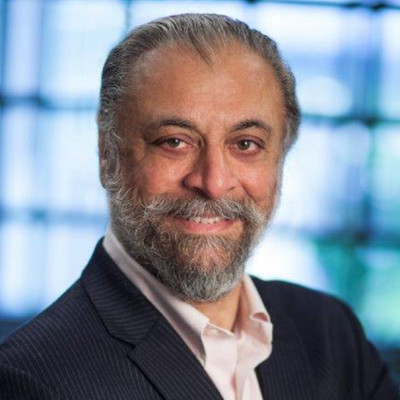Smarter Strategies
Insights and best practices for digital transformation
As Pandemic Accelerates Digital Transformation, Planning Is the Key to Success
October 2, 2020
By Inderpal Bhandari

Coordinated planning is crucial to the success of digital transformation.
When architecting and executing a digital transformation, especially while in the throes of a global pandemic, an enterprise’s success or failure depends far more on the soundness of the plan, rather than the all-star team of experts drafted for the effort.
All too often, I hear from Chief Data and Digital Officers (CDOs), about the great teams that they’ve put in place to begin tackling major modernization projects. Too seldom do I hear about the underlying plan.
This is significant, because as I write this article, enterprises around the world are moving fast and furious in their digital transformations. During IBM’s recent IBM CDO Summit, 80% of attendees surveyed said that COVID-19 has accelerated their company's digital and technology strategy. The figure dovetails with third-party research from firms like Twilio, which recently reported the results of a survey in which 97% of respondents agreed that the pandemic has caused them to speed up their digital transformations.
But my counsel is simple: The path to successful transformations starts with a clear vision, and it leads directly through thoughtful, coordinated planning—as boring as that may sound. Plan ahead, because speed and top talent alone can actually slow progress.
Know Where You’re Headed
So, how to do it?
Starting with a clear-cut goal is essential. Reach out and collaborate with colleagues across the enterprise to gain alignment and strength of purpose. Crystalize the transformation vision.
At our Summit, thought leaders from several industries discussed how C-suite executives—whether their focus is data, digital or technology—are collaborating more than ever. Increasingly, they are the go-to players for leading change in their organizations. In fact, four of every five attendees said that in their companies, Chief Data, Chief Technology and Chief Digital Officers were working closely together to drive enterprise-wide transformation.
Where the attendees diverged was in describing how their organizations were structured to achieve that transformation. Each structure was different. That is to be expected. With a clear goal, it doesn’t matter as much how the pie is sliced. It is less about titles and reporting structures and more about enabling success toward a galvanizing mission. The organization should be “built to suit.”
Harmonize Four Critical Components
With a clear transformation mission in place, the plan to achieve it needs to include four components to drive successful change:
- Data
- Technology
- Business Processes
- Organizational Culture
These four factors make up what I call the Cognitive Enterprise Blueprint and are critical, regardless of the organizational structure that enables them. Further, for effective transformation to occur, they must be coordinated in lockstep. When one of part gets out of sync with the others, effective transformation will be impeded.

Whenever I hear laments of a best-laid plan that has stalled, I find that something is amiss in one or more of these quadrants. That’s the time to pause and realign.
For example, when the pandemic put personal safety front and center, we needed to pivot our technology, business processes and operations quickly to meet that priority.
Then civil unrest brought incremental urgency to connect with our people in new and meaningful ways, and to look at our data management, technology and business processes with fresh and more culturally sensitive eyes. This manifested in IBM with initiatives such as Emb(race) and our efforts to change industry terms. It also altered my leadership style. I have become more personally connected, more often, with people on my team at all levels.
One of the questions that arose at the Summit was “How long does transformation take?” This year in particular, I have seen transformation happen very quickly—almost overnight—with companies displaying incredible resilience, flexibility and innovation.
On the other hand, the answer is “forever.” There is no finish line. Transformation is a journey, not a destination. Data, technology, organizational considerations and business processes will continue to change.
New challenges will come our way, and the transformation must evolve to keep pace. With a clear goal and a coordinated plan, it can.

Inderpal Bhandari is Global Chief Data Officer at IBM.
____________________________________________
More than 110 professionals gathered online for the IBM Chief Data Officer Summit: Data, Digital, and Technology Data in Partnership.
Thought leaders including Krishan Bhagavathula, CTO of the National Basketball Association, Bernardo Rodriguez, Chief Digital and Technology Officer of J. D. Power, and Chris Wright, CTO of Red Hat shared their insights and best practices.
Watch the replay and register for our upcoming IBM CDO Summits here.